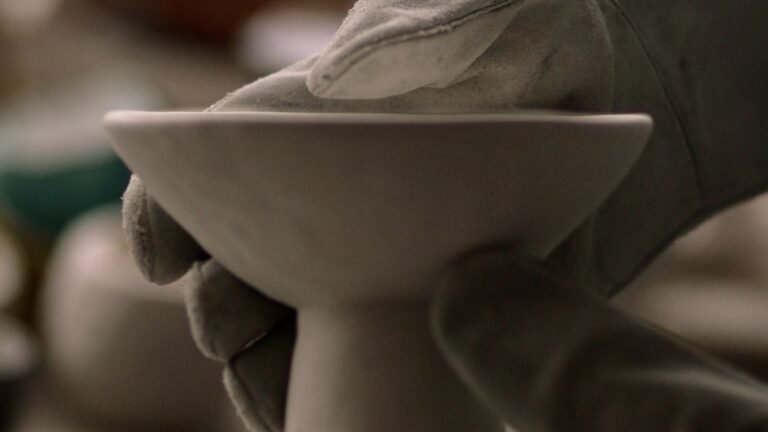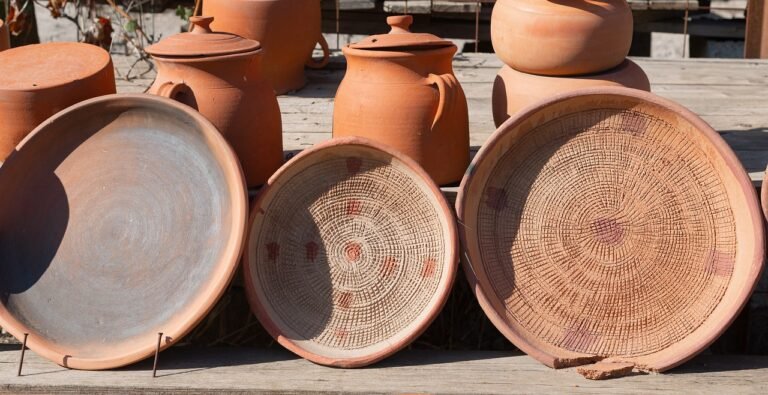Can you bake modeling clay? Quick facts
Working with modeling clay is a great way to express your creativity and the possibilities are sheer endless. There is a huge difference between ceramic clay and modeling clay, as the latter is meant to be re-used. But perhaps you wish to preserve your creation, which begs the question, can you bake modeling clay?
Standard modeling clay cannot be baked. A few polymer clays from brands like Fimo, Premo, and Sculpey can be baked in a home oven following the manufacturer’s instructions. Furthermore, you can choose air-drying modeling clay, that cures if you leave it outside. Usually, it will require one or two days to fully dry.
While you can use clay as a material for a wide variety of ideas, from animations to sculptures, not all types of clay have the same characteristics. There is oil-based modeling clay, polymer modeling clay, air-dry clay, and pottery, also called “firing” clay. To ensure your next project will be a success, you should know how your material will react to baking.
Can Modeling Clay Be Baked?
Overall modeling clay is your best choice to create three-dimensional models, whether you want to visualize other creative plans, work in animation, or design creative sculptures.
And while there are no rules for creating art with this versatile material, there are a few things you should know about working with the product.
If you are wondering whether you can bake your modeling clay or not, you should check your product instructions carefully, as there are different kinds of modeling clay.
Mainly you will find four types:
- Oil-based clay
- Water-based clay
- Polymer clay
- Dough clay
Oil-based clay contains oils, waxes, and clay minerals as ingredients. Since the oil does not evaporate like water, the material remains soft even when left outside. But the oil base also makes it impossible to bake it. In fact, oil-based clay will melt when heated and can be poured into moulds for projects.
Water-based clay is similar to its oil-based counterparts. It is commonly used by animators and other entertainment professionals, for example for masks, mock-up, or sculptures. The recommended storage is in a slightly moist place, for example, using a spray bottle or a damp towel. It is also not recommended to bake water-based clay.
Polymer is a synthetic product, also called Plasticine or Plasilina. It is a type of plastic, that comes in a variety of forms. Hence, polymer clay does not actually contain clay, but it is called clay because it is used similarly and also moldable. This type of material cannot be baked and will most likely melt in the oven, instead of hardening.
Last but not least, dough clay can be prepared at home, similar to Play-Doh. It is best for affordable, fun projects, as the base is often flour, cornstarch, cream of tartar, oil, and water. This article can help you with some recipes.
The advantage of modeling clay, compared to ceramic clay (which requires baking in a kiln), is that it will not dry out and can be used for years if stored correctly. The recommended storage of modeling clay is away from light and excessive heat, as it can affect the characteristics.
Modeling clay is meant to be re-used, making it ideal for anyone that needs clay for multiple projects, with no need to preserve them. Hence, if you are an artist, that uses modeling clay to visualize ideas before working with the final material, it is ideal for you. But also, for art groups or kindergartens, modeling clay is great to be used again and again.

Can You Bake Air Dry Clay?
For a start, It is probably best to answer the question of what is air dry clay. As you can guess from the name, this material dries and cures with air. Air-dry clay does not need to be baked. It is very easy to shape, which makes it ideal for beginners and children. The composition of air-dry clay can be described as soft and light with a spongy texture.
Air-dry clay has different characteristics than standard modeling clay. While you can leave modeling clay out without the material changing its texture. Air-dry clay is meant to harden without the influence of heat and therefore become stiff if you leave it outside. Still, you can use it for a variety of projects and is also suitable for beginner art projects.
Especially because it is not necessary to bake creations made from air dry clay, it is a great solution if the design is too big for an oven or there is no oven available. The setting duration can vary, depending on the size of the clay item. Usually, it takes between 1 and 2 days. During the drying process, the texture will change and become almost porous.
The drying time will vary based on the thickness of the clay and the moisture in the air, but most types of air dry clays will be completely dry within 72 hours.
Keep in mind that you need to protect any unused air dry clay in a Ziploc bag or an airtight container, so you can still form for future projects.
If you bake air dry clay, it will most likely burn and destroy your creative work. And it is not even necessary. If you wish to speed up the drying process, you can try to put it into the oven on a low setting (less than 200 degrees Fahrenheit or 90 degrees Celsius) but is not recommended.
Projects made from air dry clay should be handled with care since the material can be quite fragile. Especially if your creations include delicate additions, like legs or fingers on sculptures. One great tip to minimize this is to refrain from adding too much water to the clay.
In many cases, air dry clay comes already dyed in different colors, but it can also be painted and glazed. For painting, the use of acrylic paint is recommended. A glaze will seal the surface to make it more resistant to liquid after drying.
Summary
Now you are aware of different types of clay and how they can and should be used. Modeling clay should not be baked, as the material comes in two attributes. It is either, not meant to harden, or it will harden on its own, by being left outside. Baking will damage the material and your creations.
In the end, as an artist you need to decide, whether you want a material that can be used over and over again, to visualize different ideas. Or if you prefer to create a project and preserve it by letting it air dry, and potentially even paint and glaze it to enhance its durability.







